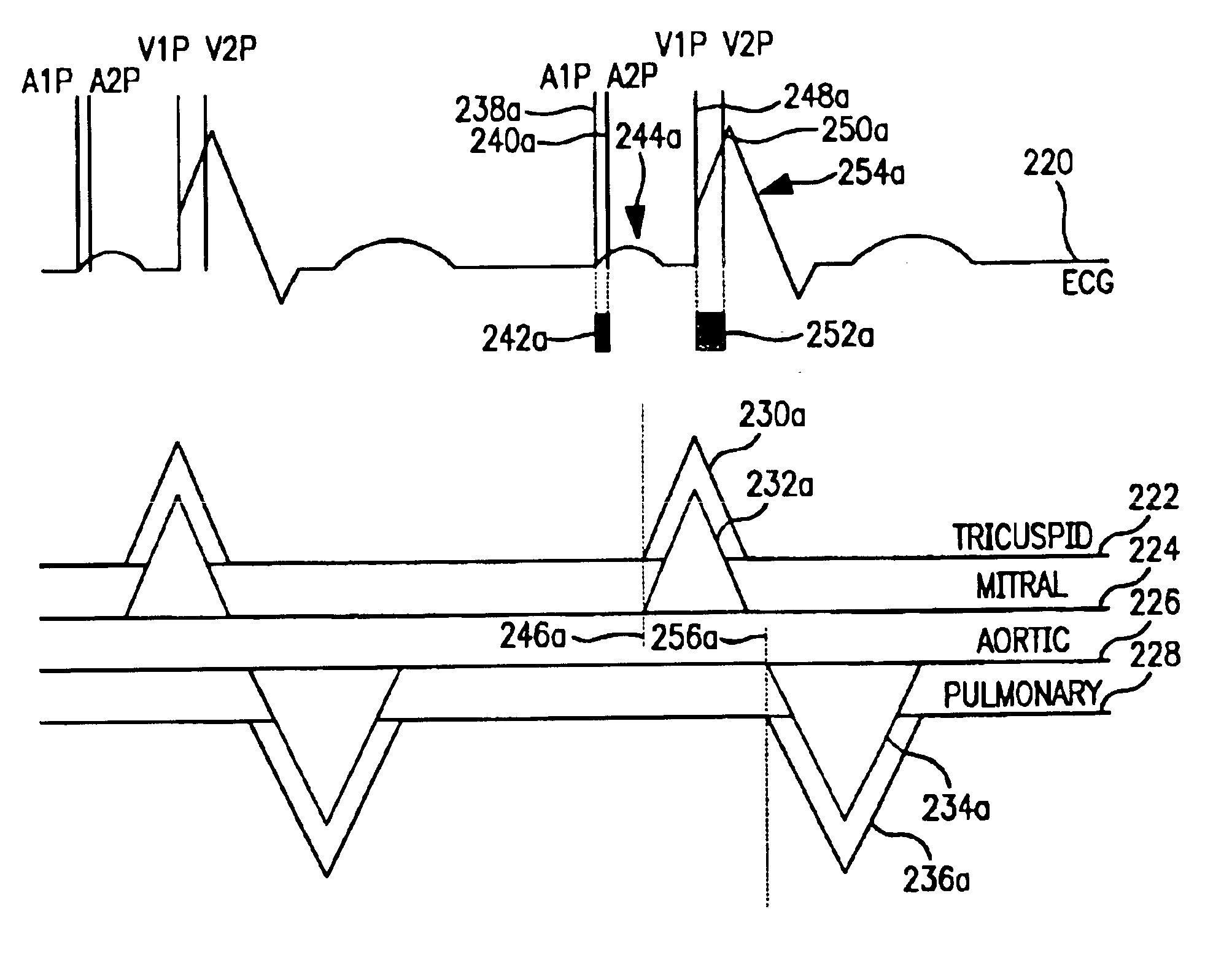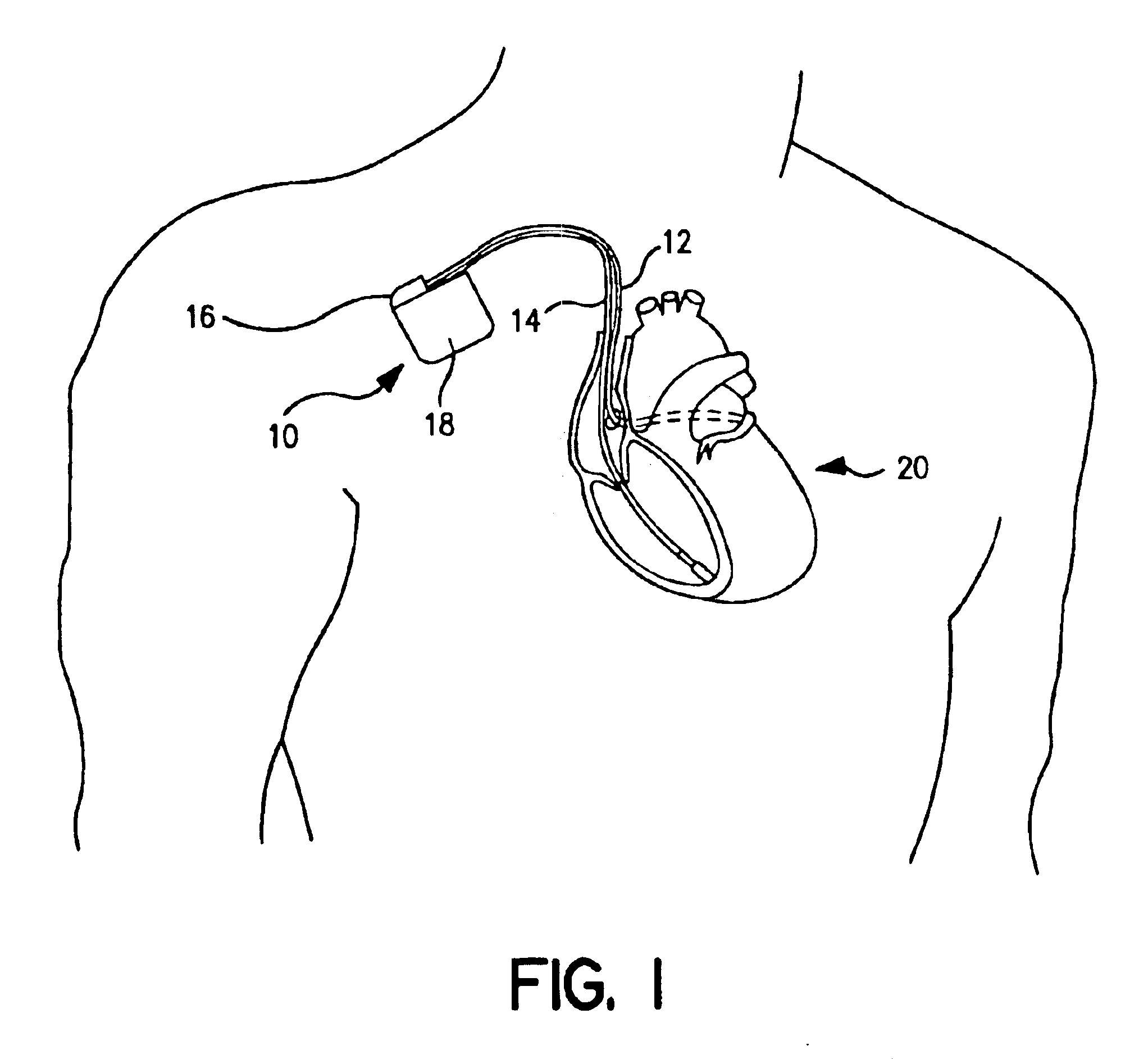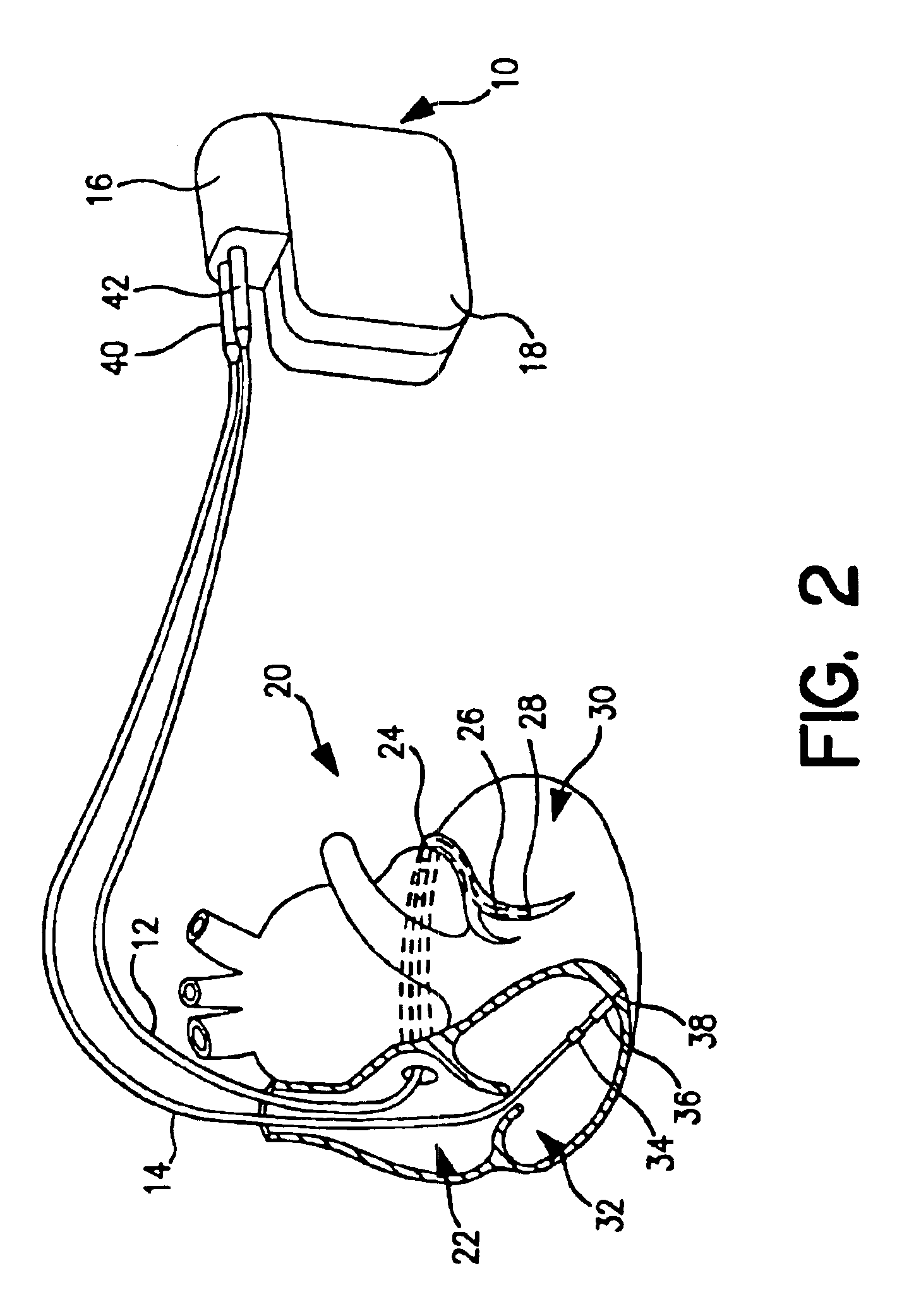Cardiac resynchronization with adaptive A1-A2 and/or V1-V2 intervals
a pacing system and a multi-chamber technology, applied in the field of multi-chamber cardiac pacing systems, can solve the problems of inefficiency, undesirable asynchronous blood ejection, inability to adapt a pacing interval to current cardiac conditions to promote hemodynamic efficiency, etc., to achieve near-optimal cardiac performance, improve stroke volume and cardiac output, and improve cardiac performan
- Summary
- Abstract
- Description
- Claims
- Application Information
AI Technical Summary
Benefits of technology
Problems solved by technology
Method used
Image
Examples
Embodiment Construction
In the following detailed description of the preferred embodiments, reference is made to the accompanying drawings that form a part hereof, and in which are shown by way of illustration specific embodiments in which the invention may be practiced. It is to be understood that other embodiments may be utilized and structural or logical changes may be made without departing from the scope of the present invention. The following detailed description, therefore, is not to be taken in a limiting sense, and the scope of the present invention is defined by the appended claims.
FIG. 1 is a simplified schematic view of pacemaker 10, which is one embodiment of an implantable medical device of the present invention. Pacemaker 10 shown in FIG. 1 comprises at least one of pacing and sensing leads 12 and 14 attached to connector module 16 of hermetically sealed housing 18 and implanted near human or mammalian heart 20. Pacing and sensing leads 12 and 14 sense electrical signals attendant to the dep...
PUM
 Login to View More
Login to View More Abstract
Description
Claims
Application Information
 Login to View More
Login to View More - R&D
- Intellectual Property
- Life Sciences
- Materials
- Tech Scout
- Unparalleled Data Quality
- Higher Quality Content
- 60% Fewer Hallucinations
Browse by: Latest US Patents, China's latest patents, Technical Efficacy Thesaurus, Application Domain, Technology Topic, Popular Technical Reports.
© 2025 PatSnap. All rights reserved.Legal|Privacy policy|Modern Slavery Act Transparency Statement|Sitemap|About US| Contact US: help@patsnap.com



